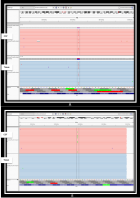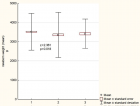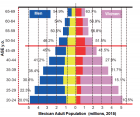Table of Contents
Remote Effect of Fascial Manipulation on Knee Pain: A Case Report
Published on: 13th June, 2024
The study on the remote effect of fascial manipulation on knee pain presents a case report of a patient with knee pain who underwent a single session of fascial manipulation to reduce pain and improve daily activities. The report explains the anatomy of the knee joint and the potential causes of knee pain, including bony and soft tissue involvement. Fascial manipulation is a technique that involves applying mechanical force to areas of fascial dysfunction to stimulate the body’s natural inflammatory response. The therapy is based on applying physical friction to the densified connective tissue with an elbow or knuckle to raise the temperature and change the consistency of loose connective tissue rich in hyaluronic acid. The locations picked were proximal and distal to the problematic area, and no point was treated over the painful region, which is consistent with the notion of pain being caused by aberrant fascial tensions. Manipulation of the connective tissue is thought to cause mechanical stress and heat, resulting in less macromolecular crowding and defragmentation of the Hyaluronic Acid (HA) polymers and normalised fascial gliding across the connective tissue. Reduced discomfort and enhanced range of motion are two more regularly reported effects of Fascial Manipulation. The patient was urged to resume his everyday activities after each treatment session to favour typical physiological motions that would align collagen fibres along normal lines of force. The report concludes that fascial manipulation can be a beneficial technique for managing knee pain, and it can be complemented with exercises and stretches to improve outcomes.
The Impact of Telerehabilitation on Physical Therapy Services in Rural Communities
Published on: 3rd May, 2024
Telerehabilitation is a transformative approach to physical therapy, revolutionizing the accessibility of healthcare in rural communities through the strategic use of Telecommunications technology. This novel approach has the potential to significantly enhance the efficacy of healthcare delivery, particularly considering the critical challenges posed by geographical isolation and resource scarcity. This paper explores the multifaceted benefits of Telerehabilitation, including increased access to care and reduced costs, alongside the challenges of technological barriers and privacy considerations. It provides a comprehensive overview of Telerehabilitation’s impact on rural healthcare, emphasizing its capacity to optimize patient outcomes and proposing strategies for effective implementation. The findings of this study suggest that the use of technology to deliver telecare is a key means of delivering equitable healthcare to underserved populations, a promising way to improve access to rural physiotherapy services address the challenge of telehealth resources, and promote the long-term sustainability of rural Telerehabilitation practices.
Management of Non-contact Injuries, Nonspecific Chronic Pain, and Prevention via Sensory Conflicts Detection: Vertical Heterophoria as a Landmark Indicator
Published on: 25th March, 2024
Sensory and sensorimotor conflicts can lead to sensory and motor efficiency disturbances, such as pain and less efficient motor control. Vertical heterophoria (VH) and vertical orthophoria (VO) are respectively the latent vertical misalignment of the eyes when the retinal images are dissociated, or not. Mild VH (< 0.57°) could indicate the presence of a conflict resulting from eye refraction problems and/or a disruption of the somaesthetic cues. Canceling the conflict(s) can immediately restore VO, making it possible to observe an improvement in the mobility of spinal and peripheral joints, the performance in the motor and balance tests after initial alternation, and a decrease in pain. The Maddox Rod Test was used to detect mild VH but doesn’t determine the sensory conflict origin. The aim of this retrospective study is to show its use as a landmark in which sensory afferent conflict could induce symptoms (i.e. pain; decreased range of motion; nonoptimal postural and motor control) and how to manage it, analyzing data from 525 subjects. The clinical process is intended to inhibit or neutralize afferent signals involved in the sensorimotor loops required by the central nervous system in motor control in order to spot the locus of conflict (stomatognathic system, pelvis, plantar afferences, piercings (body art) or/and eye refraction problems). This investigation protocol based on VH detection provides trackers for the therapeutic intervention in the management of nonspecific chronic pain, non-contact injuries, and prevention, and a key role for practitioners in the multidisciplinary management required for patients/athletes, in the world of work/health.
Effect of Lower Extremity Training in Diabetic Peripheral Neuropathy
Published on: 12th February, 2024
Background: Diabetic peripheral neuropathy is a symmetrical length-dependent sensorimotor polyneuropathy due to chronic hyperglycemia. The World Health Organization (WHO) identified diabetes as a major global health concern. Diabetic neuropathy is characterized by motor dysfunctions (weakness and atrophy) especially at the distal muscles of lower limbs, and impaired dynamic muscular control in type 2 diabetes patients. Symptoms start in a distal-to proximal pattern in the feet, and ankle and proximally in the hip and knee for both flexors and extensors. Proximal muscle weakness affects postural stability. Dorsiflexor weakness causes increased hip, knee flexion and metatarsophalangeal extension in the initial swing whereas weakness in plantar flexors causes a greater amount of hip and knee flexion during the stance phase.Methodology: 34 subjects with Diabetic Peripheral Neuropathy who fulfilled all the inclusion criteria were recruited for the study. Ethical standards have been maintained and informed consent was taken. Subjects were randomly assigned by lottery method into two groups, intervention, and control with 17 in each. Since it is a single blinded study subjects were blinded about the interventions provided. Pre and post-test scores were taken before and after 4 weeks using Surface Electromyography (sEMG), Kinovea Software, Functional Gait Assessment (FGA) and Short Form -36 (SF-36).Results: The pre and post-score values of the kinematics of gait, Functional Gait Assessment, and Short Form - 36 were analyzed using a Paired t-test and Wilcoxon Signed Rank test within the group analysis, Mann- Whitney U test and Independent t-test for between the group analysis. Both groups displayed notable variations, whereas the intervention group exhibited more significant differences (p < 0.05). Thus, it can be inferred that lower extremity training significantly improves gait kinematics and quality of life in diabetic neuropathy.Conclusion: Lower extremity training is effective in improving the kinematics of gait and quality of life in diabetic neuropathy.

HSPI: We're glad you're here. Please click "create a new Query" if you are a new visitor to our website and need further information from us.
If you are already a member of our network and need to keep track of any developments regarding a question you have already submitted, click "take me to my Query."



















































































































































